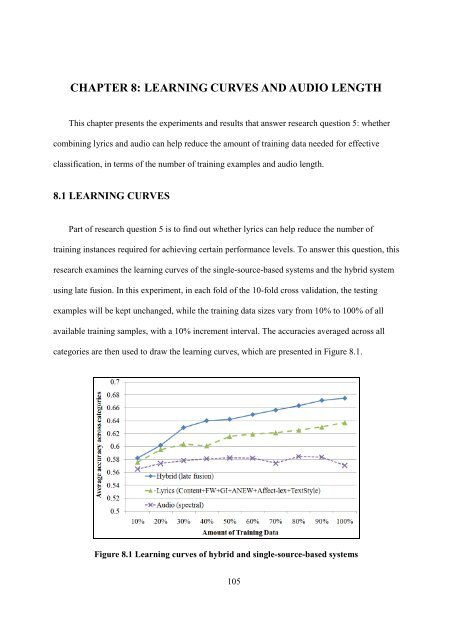improving music mood classification using lyrics, audio and social tags
improving music mood classification using lyrics, audio and social tags
improving music mood classification using lyrics, audio and social tags
Create successful ePaper yourself
Turn your PDF publications into a flip-book with our unique Google optimized e-Paper software.
CHAPTER 8: LEARNING CURVES AND AUDIO LENGTH<br />
This chapter presents the experiments <strong>and</strong> results that answer research question 5: whether<br />
combining <strong>lyrics</strong> <strong>and</strong> <strong>audio</strong> can help reduce the amount of training data needed for effective<br />
<strong>classification</strong>, in terms of the number of training examples <strong>and</strong> <strong>audio</strong> length.<br />
8.1 LEARNING CURVES<br />
Part of research question 5 is to find out whether <strong>lyrics</strong> can help reduce the number of<br />
training instances required for achieving certain performance levels. To answer this question, this<br />
research examines the learning curves of the single-source-based systems <strong>and</strong> the hybrid system<br />
<strong>using</strong> late fusion. In this experiment, in each fold of the 10-fold cross validation, the testing<br />
examples will be kept unchanged, while the training data sizes vary from 10% to 100% of all<br />
available training samples, with a 10% increment interval. The accuracies averaged across all<br />
categories are then used to draw the learning curves, which are presented in Figure 8.1.<br />
Figure 8.1 Learning curves of hybrid <strong>and</strong> single-source-based systems<br />
105
















